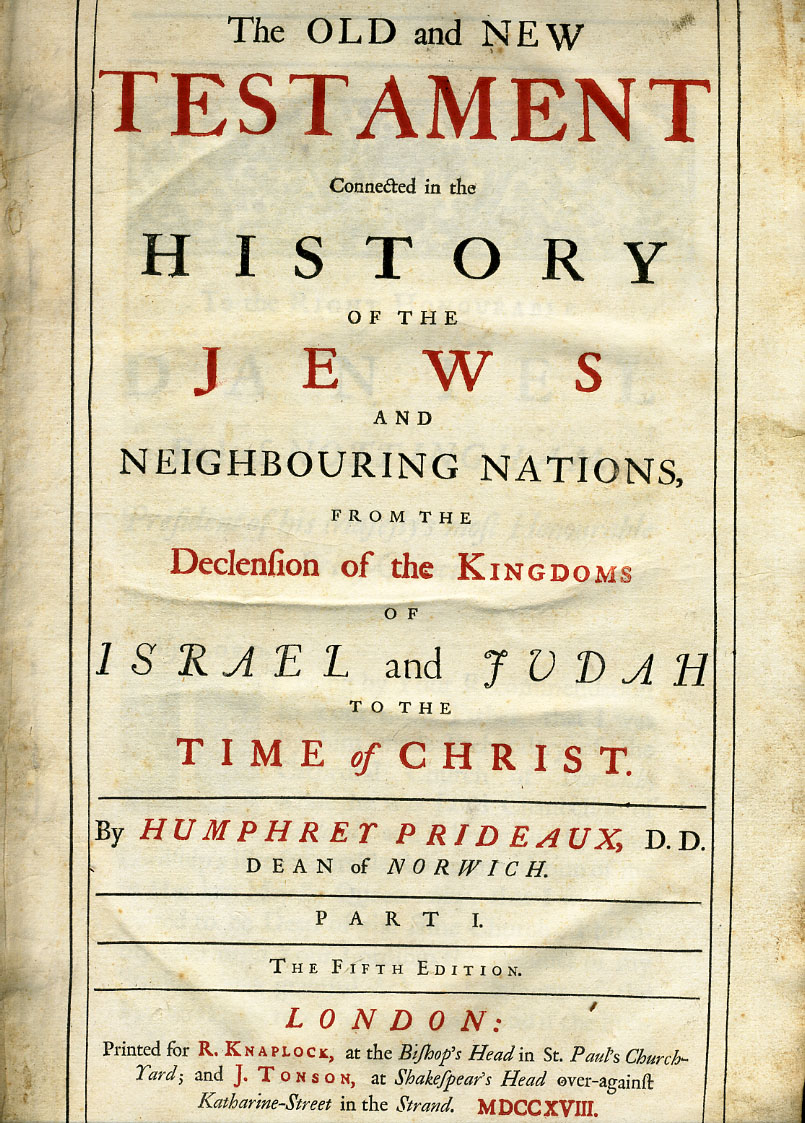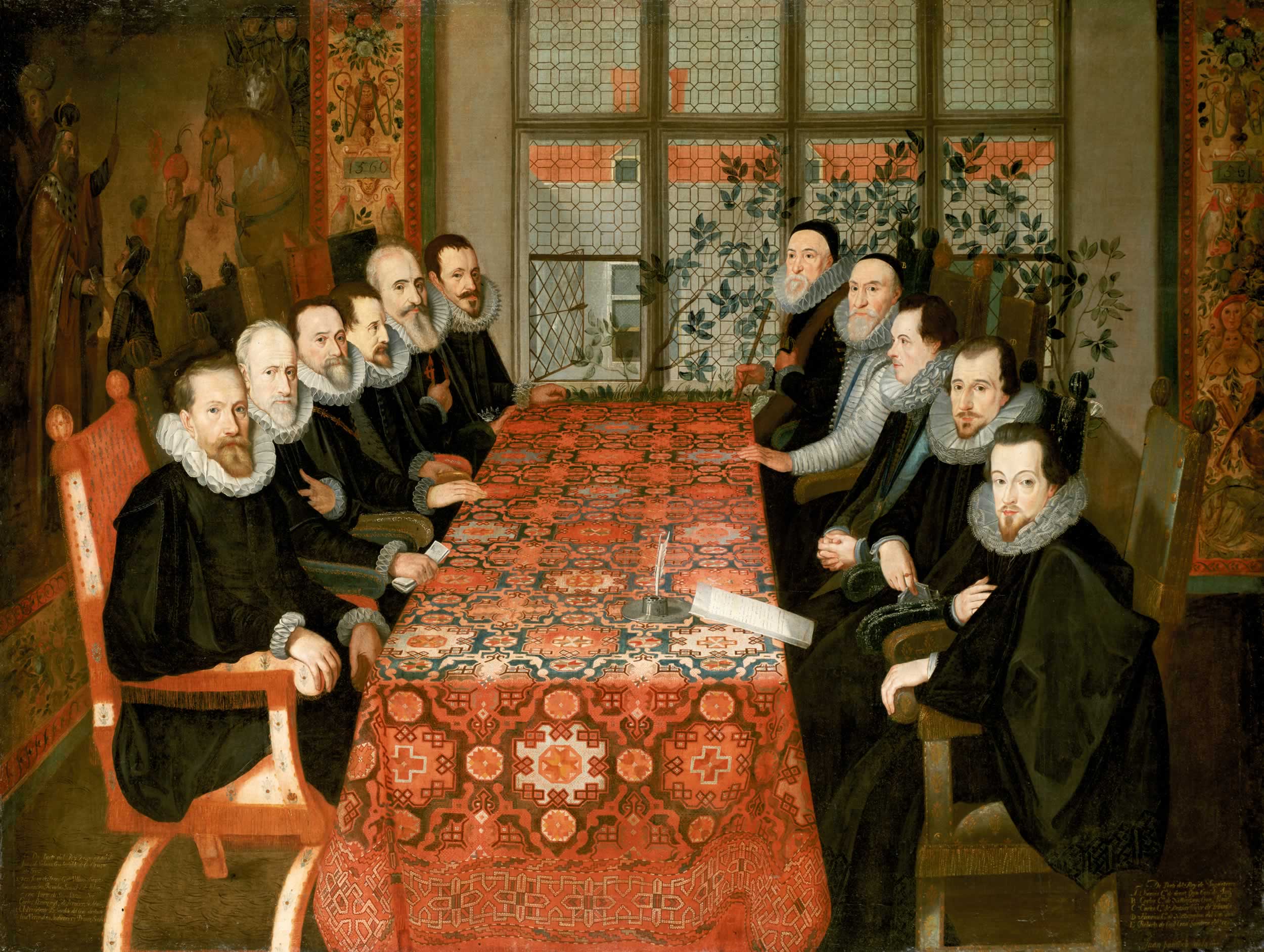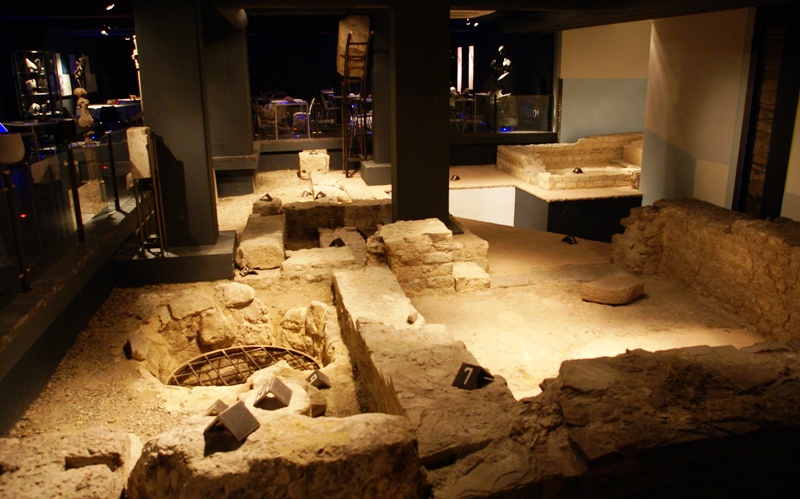|
Charles Killigrew
Charles Killigrew (1655–1725) was an English courtier, theatre manager and Master of the Revels. Life Born at Maastricht on 29 December 1655, he was son of Thomas Killigrew (the elder), by his second wife, Charlotte, daughter of John de Hesse of Holland. He was gentleman of the privy chamber to Charles II of England, Charles II, 1670, James II of England, James II, 1685, and William III of England, William III and Mary II of England, Mary II, 1689. He was Master of the Revels in 1680, patentee of Theatre Royal, Drury Lane, Drury Lane Theatre in 1682, and commissioner of prizes in 1707. Killigrew lived at Somerset House, London, and Thornham Hall, Suffolk. His varied acquirements won him the friendship of John Dryden (cf. Dedication of Juvenal, 1693, p. xxiii), Humphrey Prideaux, and others. He was buried in the Savoy Hospital on 8 January 1725, leaving by his wife Jemima, niece of Richard Bokenham, mercer, of London, two sons, Charles (died 1756) and Guilford. His library was sol ... [...More Info...] [...Related Items...] OR: [Wikipedia] [Google] [Baidu] |
Master Of The Revels
The Master of the Revels was the holder of a position within the English, and later the British, royal household, heading the "Revels Office" or "Office of the Revels". The Master of the Revels was an executive officer under the Lord Chamberlain. Originally he was responsible for overseeing royal festivities, known as ''revels'', and he later also became responsible for stage censorship, until this function was transferred to the Lord Chamberlain in 1624. However, Henry Herbert, the deputy Master of the Revels and later the Master, continued to perform the function on behalf of the Lord Chamberlain until the English Civil War in 1642, when stage plays were prohibited. The office continued almost until the end of the 18th century, although with rather reduced status. History The Revels Office has an influential role in the history of the English stage. Among the expenses of the royal Wardrobe we find provision made for ''tunicae'' and ''viseres'' ( shirts and hats) in 1347 for ... [...More Info...] [...Related Items...] OR: [Wikipedia] [Google] [Baidu] |
Thornham Hall
Thornham may refer to: England *Thornham, Greater Manchester *Thornham, Norfolk *Thornham Magna, Suffolk *Thornham Parva, Suffolk South Africa *Thornham, Eastern Cape Thornham is a town in the local municipality of Kou-Kamma, in Sarah Baartman District Municipality in the Eastern Cape province of South Africa South Africa, officially the Republic of South Africa (RSA), is the southernmost country in A ... {{geodis ... [...More Info...] [...Related Items...] OR: [Wikipedia] [Google] [Baidu] |
1725 Deaths
Seventeen or 17 may refer to: * 17 (number), the natural number following 16 and preceding 18 * one of the years 17 BC, AD 17, 1917, 2017 Literature Magazines * ''Seventeen'' (American magazine), an American magazine * ''Seventeen'' (Japanese magazine), a Japanese magazine Novels * ''Seventeen'' (Tarkington novel), a 1916 novel by Booth Tarkington *''Seventeen'' (''Sebuntiin''), a 1961 novel by Kenzaburō Ōe * ''Seventeen'' (Serafin novel), a 2004 novel by Shan Serafin Stage and screen Film * ''Seventeen'' (1916 film), an American silent comedy film *''Number Seventeen'', a 1932 film directed by Alfred Hitchcock * ''Seventeen'' (1940 film), an American comedy film *'' Eric Soya's '17''' (Danish: ''Sytten''), a 1965 Danish comedy film * ''Seventeen'' (1985 film), a documentary film * ''17 Again'' (film), a 2009 film whose working title was ''17'' * ''Seventeen'' (2019 film), a Spanish drama film Television * ''Seventeen'' (TV drama), a 1994 UK dramatic short starring Christ ... [...More Info...] [...Related Items...] OR: [Wikipedia] [Google] [Baidu] |
1655 Births
Events January–March * January 5 – Emperor Go-Sai ascends to the throne of Japan. * January 7 – Pope Innocent X, leader of the Roman Catholic Church and the Papal States, dies after more than 10 years of rule. * February 14 – The Mapuches launch coordinated attacks against the Spanish in Chile, beginning the Mapuche uprising of 1655. * February 16 – Dutch Grand Pensionary advisor Johan de Witt marries Wendela Bicker. * March 8 – John Casor becomes the first legally recognized slave in what will become the United States, as a court in Northampton County in the Colony of Virginia issues its decision in the Casor lawsuit, the first instance of a judicial determination in the Thirteen Colonies holding that a person who had committed no crime could be held in servitude for life. * March 25 – Saturn's largest moon, Titan, is discovered by Christiaan Huygens. April–June * April 4 – Battle of Porto Farina, T ... [...More Info...] [...Related Items...] OR: [Wikipedia] [Google] [Baidu] |
Savoy Hospital
The Savoy Palace, considered the grandest nobleman's townhouse of medieval London, was the residence of prince John of Gaunt until it was destroyed during rioting in the Peasants' Revolt of 1381. The palace was on the site of an estate given to Peter II, Count of Savoy, in the mid 13th century, which in the following century came to be controlled by Gaunt's family. It was situated between Strand and the River Thames – the Tudor era Savoy Chapel carries on the name, and the present day Savoy Theatre and Savoy Hotel were named in its memory. In the locality of the palace, the administration of law was by a special jurisdiction, separate from the rest of the county of Middlesex, known as the Liberty of the Savoy. Savoy Palace In the Middle Ages, although there were many noble palaces within the walls of the City of London, the most desirable location for housing the nobility was the Strand, which was the greatest part of the ceremonial route between the City and the Palace ... [...More Info...] [...Related Items...] OR: [Wikipedia] [Google] [Baidu] |
Humphrey Prideaux
Humphrey Prideaux (3 May 1648 – 1 November 1724) was a Cornish churchman and orientalist, Dean of Norwich from 1702. His sympathies inclined to Low Churchism in religion and to Whiggism in politics. Life The third son of Edmond Prideaux, he was born at Padstow, Cornwall, on 3 May 1648. His mother was a daughter of John Moyle. After education at Liskeard grammar school and Bodmin grammar school, he went to Westminster School under Richard Busby, recommended by his uncle William Morice. On 11 December 1668 he matriculated at Christ Church, Oxford, where he had obtained a studentship. He graduated B.A. 22 June 1672, M.A. 29 April 1675, B.D. 15 November 1682, D.D. 8 June 1686. In January 1674, Prideaux recorded in his letters a visit to his home of William Levett; with Levett came Lord Cornbury, son of the Earl of Clarendon, Levett's principal patron. In other letters, Prideaux mentioned alliances with Levett in ongoing church political maneuverings. At the university he was know ... [...More Info...] [...Related Items...] OR: [Wikipedia] [Google] [Baidu] |
John Dryden
'' John Dryden (; – ) was an English poet, literary critic, translator, and playwright who in 1668 was appointed England's first Poet Laureate. He is seen as dominating the literary life of Restoration England to such a point that the period came to be known in literary circles as the Age of Dryden. Romanticist writer Sir Walter Scott called him "Glorious John". Early life Dryden was born in the village rectory of Aldwincle near Thrapston in Northamptonshire, where his maternal grandfather was the rector of All Saints. He was the eldest of fourteen children born to Erasmus Dryden and wife Mary Pickering, paternal grandson of Sir Erasmus Dryden, 1st Barone t (1553–1632), and wife Frances Wilkes, Puritan landowning gentry who supported the Puritan cause and Parliament. He was a second cousin once removed of Jonathan Swift. As a boy, Dryden lived in the nearby village of Titchmarsh, where it is likely that he received his first education. In 1644 he was sent to West ... [...More Info...] [...Related Items...] OR: [Wikipedia] [Google] [Baidu] |
Suffolk
Suffolk () is a ceremonial county of England in East Anglia. It borders Norfolk to the north, Cambridgeshire to the west and Essex to the south; the North Sea lies to the east. The county town is Ipswich; other important towns include Lowestoft, Bury St Edmunds, Newmarket, and Felixstowe which has one of the largest container ports in Europe. The county is low-lying but can be quite hilly, especially towards the west. It is also known for its extensive farming and has largely arable land with the wetlands of the Broads in the north. The Suffolk Coast & Heaths and Dedham Vale are both nationally designated Areas of Outstanding Natural Beauty. History Administration The Anglo-Saxon settlement of Suffolk, and East Anglia generally, occurred on a large scale, possibly following a period of depopulation by the previous inhabitants, the Romanised descendants of the Iceni. By the fifth century, they had established control of the region. The Anglo-Saxon inhabitant ... [...More Info...] [...Related Items...] OR: [Wikipedia] [Google] [Baidu] |
Somerset House
Somerset House is a large Neoclassical complex situated on the south side of the Strand in central London, overlooking the River Thames, just east of Waterloo Bridge. The Georgian era quadrangle was built on the site of a Tudor palace ("Old Somerset House") originally belonging to the Duke of Somerset. The present Somerset House was designed by Sir William Chambers, begun in 1776, and was further extended with Victorian era outer wings to the east and west in 1831 and 1856 respectively.Humphreys (2003), pp. 165–166 The site of Somerset House stood directly on the River Thames until the Victoria Embankment parkway was built in the late 1860s. The great Georgian era structure was built to be a grand public building housing various government and public-benefit society offices. Its present tenants are a mixture of various organisations, generally centred around the arts and education. Old Somerset House 16th century In the 16th century, the Strand, the north bank of ... [...More Info...] [...Related Items...] OR: [Wikipedia] [Google] [Baidu] |
Maastricht
Maastricht ( , , ; li, Mestreech ; french: Maestricht ; es, Mastrique ) is a city and a municipality in the southeastern Netherlands. It is the capital and largest city of the province of Limburg. Maastricht is located on both sides of the Meuse ( nl, Maas), at the point where the Jeker joins it. Mount Saint Peter (''Sint-Pietersberg'') is largely situated within the city's municipal borders. Maastricht is about 175 km south east of the capital Amsterdam and 65 km from Eindhoven; it is adjacent to the border with Belgium and is part of the Meuse-Rhine Euroregion, an international metropolis with a population of about 3.9 million, which includes the nearby German and Belgian cities of Aachen, Liège and Hasselt. Maastricht developed from a Roman settlement (''Trajectum ad Mosam'') to a medieval religious centre. In the 16th century it became a garrison town and in the 19th century an early industrial centre. Today, the city is a thriving cultural and regional hub. It ... [...More Info...] [...Related Items...] OR: [Wikipedia] [Google] [Baidu] |
Theatre Royal, Drury Lane
The Theatre Royal, Drury Lane, commonly known as Drury Lane, is a West End theatre and Grade I listed building in Covent Garden, London, England. The building faces Catherine Street (earlier named Bridges or Brydges Street) and backs onto Drury Lane. The building is the most recent in a line of four theatres which were built at the same location, the earliest of which dated back to 1663, making it the oldest theatre site in London still in use. According to the author Peter Thomson, for its first two centuries, Drury Lane could "reasonably have claimed to be London's leading theatre". For most of that time, it was one of a handful of patent theatres, granted monopoly rights to the production of "legitimate" drama in London (meaning spoken plays, rather than opera, dance, concerts, or plays with music). The first theatre on the site was built at the behest of Thomas Killigrew in the early 1660s, when theatres were allowed to reopen during the English Restoration. Initial ... [...More Info...] [...Related Items...] OR: [Wikipedia] [Google] [Baidu] |
Mary II Of England
Mary II (30 April 166228 December 1694) was Queen of England, Scotland, and Ireland, co-reigning with her husband, William III & II, from 1689 until her death in 1694. Mary was the eldest daughter of James, Duke of York, and his first wife Anne Hyde. Mary and her sister Anne were raised as Anglicans at the behest of their uncle, King Charles II, although their parents both converted to Roman Catholicism. Charles lacked legitimate children, making Mary second in the line of succession. She married her first cousin, William of Orange, a Protestant, in 1677. Charles died in 1685 and James took the throne, making Mary heir presumptive. James's attempts at rule by decree and the birth of his son from a second marriage, James Francis Edward (later known as "the Old Pretender"), led to his deposition in the Glorious Revolution of 1688 and the adoption of the English Bill of Rights. William and Mary became king and queen regnant. Mary mostly deferred to her husband – a r ... [...More Info...] [...Related Items...] OR: [Wikipedia] [Google] [Baidu] |





